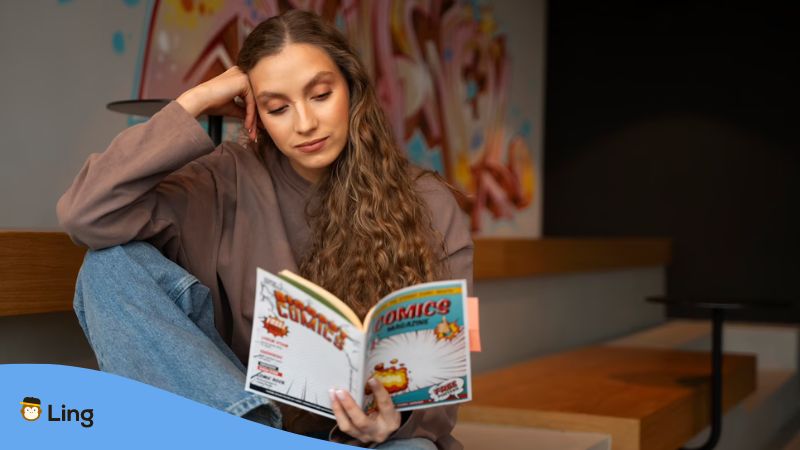Welcome! Let’s learn Korean writing together.
Hangul, the Korean alphabet, may seem foreign now, but don’t worry. We’ll take it step by step.
Hangul is logical and easier than you might think.
From the simple vowels and consonants, we’ll build up to syllables and words.
We’re aiming for a real understanding of writing in the Korean language here, not just memorization.
So, are you ready?
Let’s get started with our step-by-step guide to mastering Korean writing.
A Brief History Of Korean Writing
Let’s take a quick detour down memory lane.
The story of the Korean writing system starts before Hangul, back when Classical Chinese, or Hanja, was the standard.
Yet, it was complex and not easily accessible for everyday folks.
The Great King Sejong of South Korea saw this gap, and in the 15th century, he introduced Hangul, a writing system for all.
Hangul is smart and efficient.
It’s not a random set of symbols but a system where shapes represent articulatory phonetics, mirroring how our mouth forms sound.
For instance, the symbol ‘ㅁ’ represents ‘m’, resembling a mouth making the ‘m’ sound.
But enough of history. Let’s bring Hangul to life.
Let’s turn the page to the first chapter of your Hangul mastery!
1. Understanding The Basics Of Hangul
Right off the bat, Hangul can be deceptively simple.
It all boils down to just 14 consonants and 10 vowels. That’s it!
These symbols and sounds are the building blocks of the entire Korean language.
Learn The Basic Consonants And Vowels
Let’s start with Korean consonants.
There are 14 of them: ㄱ (g/k), ㄴ (n), ㄷ (d/t), ㄹ (r/l), ㅁ (m), ㅂ (b/p), ㅅ (s), ㅇ (silent/ng), ㅈ (j), ㅊ (ch), ㅋ (k), ㅌ (t), ㅍ (p), ㅎ (h).
Notice how some have two sounds?
That’s because the pronunciation can change based on where they are in a word.
Now, onto vowels.
There are 10 basic ones: ㅏ (a), ㅑ (ya), ㅓ (eo), ㅕ (yeo), ㅗ (o), ㅛ (yo), ㅜ (u), ㅠ (yu), ㅡ (eu), ㅣ (i).
It may take some time to get these sounds right.
So, practice Korean alphabet letters, and listen to Korean speech whenever you can.
2. Forming Syllables In Hangul
Mastered the basic sounds? Great!
Now, we’re going to put these sounds together to form syllables.
This is where Hangul really shines!
Combining Consonants And Vowels
Every Korean syllable starts with a consonant, followed by a vowel.
They can be arranged in a square shape, with the consonant to the left and the vowel to the right, like “가” (ga).
Or they can be arranged top to bottom, with the consonant on top and the vowel underneath, like “고” (go).
Also, some syllables have a third component, a final consonant, or “Batchim.”
This goes underneath the vowel, forming a neat block, like “강” (gang). But we’ll dive deeper into “Batchim” later.
It’s like building blocks, really.
By learning how to stack and arrange these Korean letters, you’ll soon find yourself forming words like “사랑” (Sarang – love) or “친구” (Chingu – friend).

3. Exploring Complex Elements Of Hangul
By now, you’ve dipped your toes into Hangul’s waters.
Now, let’s navigate the waves of double consonants, double vowels, and the often tricky ‘Batchim.’
Understanding Double Consonants And Vowels
First up, double Hangul consonants.
These are ㄲ (kk), ㄸ (tt), ㅃ (pp), ㅆ (ss), and ㅉ (jj).
They have a stronger sound than their single counterparts.
For instance, the Korean word “깎다” (to trim) starts with a double ‘ㄲ,’ which is pronounced with a stronger ‘k’ sound compared to the single ‘ㄱ.’
Double Korean vowels are a combo of two single vowels, creating new sounds altogether.
Some examples include ㅐ (ae) as in “내” (my), and ㅒ (yae) as in “쌰” (slang for ‘hurry up’).
Grasping The Concept Of ‘Batchim’
The ‘Batchim’ is an essential character you’ll want to know.
It’s like a secret agent working undercover at the end of a syllable block, changing the pronunciation game entirely. Here’s how it works.
Check out the syllable ’감’.
Notice the ‘ㅁ’ just hanging out there at the bottom?
That’s your ‘Batchim’!
It gives an ‘m’ sound to the end of the syllable.
So, ‘감’ sounds like ‘gam,’ which is how you say ‘persimmon’ in Korean.
But the ‘Batchim’ isn’t a one-trick pony.
Switch it out for a different character and have a new sound.
For example, replace ‘ㅁ’ with ‘ㅂ’ and ‘감’ becomes ‘갑,’ pronounced ‘gap,’ meaning ‘sudden.’
Here’s the curveball: a ‘Batchim’ can change its tune based on the following syllable.
Like a chameleon, it can match its sound to the first letter of the next syllable.
So, if ‘갑’ is followed by a syllable starting with ‘ㅁ,’ the ‘ㅂ’ will sound like an ‘m’.
So, ‘갑문’ (gapmun) ends up sounding like ‘gam-mun.’

4. Mastering Korean Writing Rules
With the sounds sorted, let’s dive into Hangul’s writing rules.
Stroke order and spacing can make or break your Korean writing.
Let’s take a close look.
Practicing Hangul Stroke Order
Picture yourself learning to dance. The order of steps is crucial, right?
The same goes for the Hangul stroke order. It gives your writing fluidity and precision.
Look at the consonant ‘ㅁ.’ It’s four strokes forming a square.
The dance begins with the top stroke: a horizontal line sweeping from left to right.
Next, you draw the two vertical lines, starting from the left, then the right.
Finally, the last step is the bottom stroke, moving from left to right again.
Take another consonant: ‘ㅅ’. It’s one single, elegant stroke.
Your pen should dance along the page, moving in a natural flow.
Remember, the stroke order is a rule, not a suggestion.
Learning Hangul Spacing Rules
Korean doesn’t use spaces to separate syllables.
Instead, they are used to break up words or phrases.
Imagine you’re writing ‘저는 학생입니다’ (I am a student).
You won’t space out every syllable like ‘저 – 는 – 학 – 생 – 입 – 니 – 다’.
Instead, the sentence is grouped into words: ‘저는 / 학생입니다.’
Notice how ‘학생입니다’ is written as one word?
That’s because it forms one cohesive idea.
Understanding this crucial difference will make your Korean writing more authentic.
Don’t worry if it feels a bit foreign at first. That’s perfectly normal.
5. Expanding Your Knowledge
Alright, you’ve grasped the basics. Now let’s take it further.
Here, we’ll delve into Hanja and the art of Seoye.
These are important aspects of Korean writing that go beyond the essentials.
Introduction To Hanja
First, we’ll tackle Hanja, Chinese characters incorporated into the Korean writing systems.
In Korean, words like “학교” (school) or “사랑” (love) are usually written in Hangul.
But they can also be written in Hanja as “學校” and “愛.”
Hanja is not commonly used in day-to-day life anymore.
Still, you’ll find it in academic texts, newspapers, and formal documents.
It’s also prevalent in names.
For example, the name “지혜” (JiHye) can be written in Hanja as “智慧,” meaning wisdom.
Understanding some basic Hanja can help you decipher complex words and enrich your Korean vocabulary.
Experiencing Korean Calligraphy (Seoye)
Next up is Seoye, Korean calligraphy.
This is a traditional art form where writing becomes a visual masterpiece.
In Seoye, artists use a brush and ink to create each Hangul character.
They focus on the balance and harmony of the strokes.
Each character should be clear and elegant, like a piece of artwork.
Seoye is not just about penmanship. It’s about expression and style.
It’s a way to connect with the cultural heritage of Korea and experience the language in a unique way.

6. Regular Practice And Continued Learning
We’re almost at the finish line, but remember that language learning is a marathon, not a sprint.
To truly master Korean writing, you need to weave it into your daily routine.
Here are some practical tips for regular practice and continued learning.
Writing Practice
Daily writing practice is paramount. It’s the key to getting comfortable with Hangul, Hanja, and even Seoye.
And the best part?
There are a multitude of resources to help you along the way!
Try writing simple sentences, then gradually move on to paragraphs and, eventually, entire essays.
There are also many websites and apps that offer structured practice for the modern Korean alphabet.
For instance, some websites allow you to write in Korean and get feedback from native speakers.
Don’t forget about the old-fashioned way either: keeping a daily journal in Korean.
This not only helps your writing but also improves your Korean vocabulary and grammar usage.
Reading Korean Texts
Reading Korean texts is just as crucial as writing.
It helps reinforce what you’ve learned while exposing you to new vocabulary and sentence structures.
Start with children’s books or graded readers, as they usually use simpler language and short sentences.
As your confidence grows, move on to Korean newspapers, novels, or webtoons.
Websites like Naver Webtoon provide a vast selection of Korean comics that cater to different language levels.
Don’t be afraid to challenge yourself.
The more you read, the more you’ll understand the nuances of Korean writing.
Just remember, every new word or phrase you learn is a victory.
Keep going, and soon, you’ll be reading and writing in Korean like a pro!
Learn More About Korean Writing With Ling!
Let’s face it. You’ve just begun an exciting ride into Korean writing.
But remember, this isn’t the end. It’s the start of your adventure into a new language.
Now, here’s the best part.
The Ling app, a cleverly crafted language app, is ready to join you in your journey.
Think of it as a travel buddy but for language learning.
The Ling app offers engaging, bite-sized lessons that cater to all, from beginners to seasoned language learners.
And Korean is just the beginning.
Ling proudly hosts over 60 different languages. So, who knows?
Today you’re exploring Korean. Tomorrow you could be diving into Tagalog or Thai.
The possibilities are endless with Ling!
The next step?
Grab your phone and download the Ling app from Google Play and App Store.
It’s time to transform your language-learning experience!
























